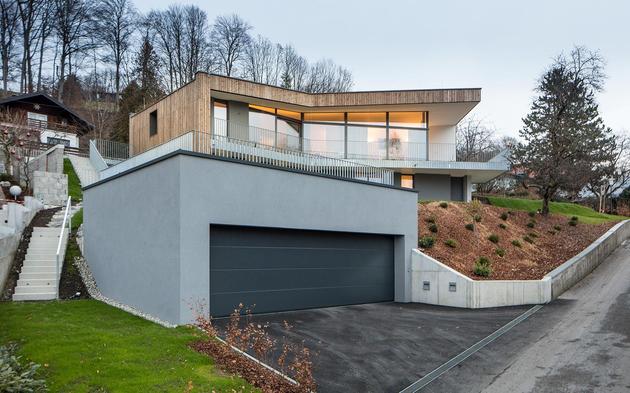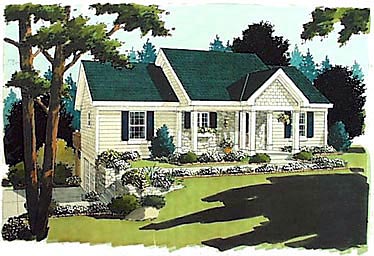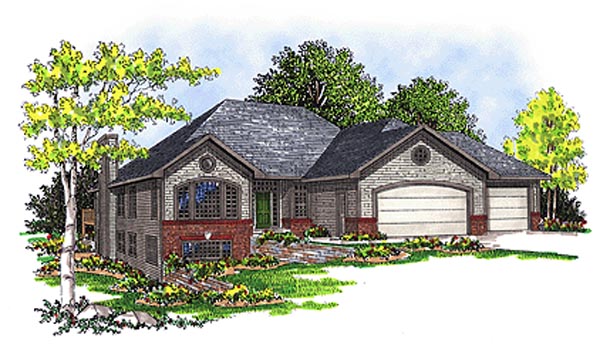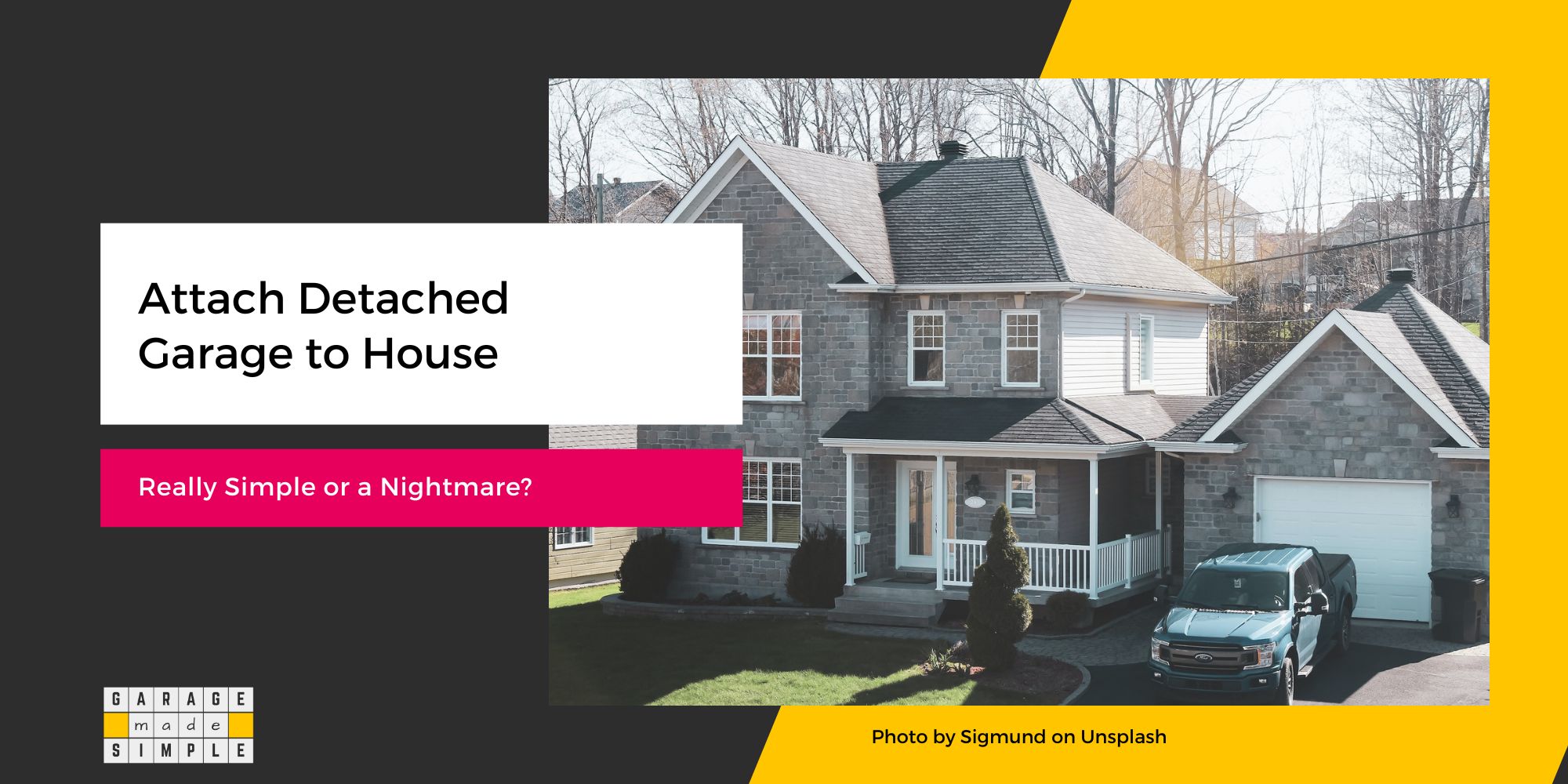7 Challenges of Building Garage On Steep Slope: Helpful Guide
garagemadesimple.com is a participant in the Amazon Services LLC Associates Program, an affiliate advertising program designed to provide a means for sites to earn advertising fees by advertising and linking to Amazon.com . The website is also an affiliate of a few other brands.
Is your house on a sloping lot and now you are planning to add a detached garage? But is building garage on steep slope possible? If yes, how do you do it?
Building garage on steep slope is certainly possible. But it needs lots of ingenuity, knowhow, skill and some extra cash.
Disclaimer: The purpose of this blog post is purely to inform and give general advice. No two lots in the world are the same. You must ultimately use the services of a qualified architect. This post will, however, help you ask the right questions and understand the solutions provided.
While the topic of the post is about building garage on steep slope, I believe I should take a holistic approach and talk about building a garage on a slope in general, as well.
Let me explain some of the best ways of building garage on steep slope (and gentler ones too!).
There are 7 challenges that must be addressed when building a garage on a slope. The key takeaways are listed here, but you can find a detailed explanation further down in the post
Key Takeaways
| No. | Challenge | Key Feature |
| 1 | Involves Higher Cost | Due to additional costs for soil testing, hiring experienced professionals, excavation, special foundations, etc. |
| 2 | Soil Testing & Terrain Stability Reports | Essential to ensure safe design and construction based on terrain characterstics. |
| 3 | Innovative Design Requirement | Garage design influenced by slope orientation and layout, various options available for entry placement. |
| 4 | Typically Needs Extensive Excavation | Extensive excavation required, vertical design recommended to reduce costs and manage water effectively. |
| 5 | Addressing the Issue of Erosion | Retaining walls and mulching may be required to prevent erosion and water damage. |
| 6 | Drainage Needs Special Attention | Proper drainage critical to reduce erosion, waterproof structure, and guide water away from the garage. |
| 7 | You Can Not Ignore Waterproofing | Waterproofing crucial for foundations below grade on steep slopes to prevent water infiltration. |
3 Storey Home on Steep Slope with Grass Roofed Garage

The large two car garage is completely hidden from the home by its grassy roof and the landscaped slope to its side. The garage accesses the home through a stairwell in a tunnel under the ground.
ABOUT TRENDIR
trendir.com is an up-and-coming community of people specialized in high-quality and on-trend cool projects and tutorials in home design, fashion, and crafts.
Gentle Slope vs Steep Slope
A sloping lot can mean different things to different people. How steep is steep does not have any definitive answer. Each person may have his own idea of differentiating between a gentle slope and steep slope.
Steep Slope
Nashua Regional Planning Commission in its FACT SHEET: 12 defines
“Steep slopes are legally defined as hillsides having a 15 foot, or greater, vertical rise over 100 feet of horizontal run, or 15% slope. They are often undesirable areas for development due to the difficulty of building on steep grades.”
Let us put this definition in the perspective of a 20’X20’ garage. If one end of the garage is going to be 3’ or higher, then we are over the 15% limit and technically in the steep slope zone.
Gentle Slope
Going by technicalities, a height difference of less than 3’ would make it a gentle slope. Intuitively, we know that can’t be the case. I would like to think that a height difference of 6” or less ( A slope of 2.5% or less) should be considered as a gentle slope.
Anything more, and we are better off using the techniques of building a garage on a steep slope. At least some of them!
I will just go ahead and assume that we are on the same page when it comes to our understanding of a gentle slope and a steep slope.
Building a Garage on a Slope: Key Factors to Consider
A gently sloping lot would actually not face any serious challenges to your building a garage on it. You could even build it yourself. Just take a few precautions, and you will be fine.
In fact, building a garage on a slope in the right direction may actually be quite useful for natural drainage (with some help though!). The chances of your garage getting flooded by rainwater or snowmelt will diminish.
A gentle slope is also quite pleasing to the eye and gives you ample opportunities to landscape the yard in creative ways.
Foundation for the Concrete Garage Floor
Whatever the lay of the land, the objective is to end up with a level concrete garage floor (except for the slight pitch towards the garage door as prescribed by the building code). So you need to start off with the right foundation.
Foundation is the structure that transfers the load of the entire building to the ground. It also keeps out the groundwater and acts as a barrier to water & soil vapor.
Needless to say, sound garage footings and foundations are critical to the structural integrity of the garage.
The Footing
The footing is the most important part of any foundation. The garage rests on the foundation and the foundation rests on the footings. If the footings are structurally sound and level then the entire garage, including the concrete garage floor will be structurally sound and level.
The footing is made by making a form out of pressure treated lumber. Rebar is installed within the form as reinforcement for the concrete. Before the concrete is poured ensure that all the footing forms are exactly the same height.
In other words they are level. After the concrete is poured in the forms, right upto the top, and it sets, all the footing tops will be level with each other.
There are two types of garage foundations. They are either “T-shaped” or “Slab-on-Grade”.
T-Shaped Foundation
The T-shaped foundation wall connecting the footings is cast in the exact same way as the footing. It is essential that the foundation walls are also plumb and level.
Slab on Grade Foundation
In case of a slab on grade foundation, a base is prepared using a layer of compressed gravel within the foundation perimeter. Once again it is ensured that the compacted base is exactly level. The concrete slab will automatically be level.
To learn more about 7 Important Things To Know About A Concrete Garage Floor do read my earlier blog post.
Building Garage on Steep Slope: The Benefits
Spectacular Views
Building garage on steep slope does come with a lot of challenges. But, on the other hand, building garage on steep slope can open up spectacular views to die for. You may be overlooking a placid lake, a gurgling stream or green meadows.
Two Level Advantage
Building garage on steep slope will let you have two levels. One level would of course be the garage. Depending on the orientation you could have a beautiful terrace on top of the garage or a cozy relaxation lounge below the garage.
Building Garage on Steep Slope: The Challenges
1. Involves Higher Cost
Building garage on steep slope is definitely going to cost you a lot more. To begin with this can not be a DIY project. You will spend extra money on
- Soil Testing and Terrain Stability Reports
- Engaging an Experienced Architect & Builder
- Excavation of the Hillside
- Special Foundations & Retaining Walls
- Drainage & Waterproofing
2. Soil Testing & Terrain Stability Reports
You will need to get the soil tested not just where you are going to build the garage but also the area around it. Different types of soils will present different challenges.
If the soil has too much clay then drainage will be a problem to worry about the most. High clay content soils tend to hold water and drain poorly.
Soil with a fair amount of granularity will make the job easier. It is easier to excavate and easier to drain too. You just do not want it to be so sandy that it has little stability and will erode easily.
Rocky terrain is great for structural stability but excavation costs will shoot through the roof. You will also have to provide drains such that the rainwater or snowmelt can be diverted safely around the building.
3. Innovative Design Requirement
The Garlinghouse Company has more than 1,000 hillside house plans for you to choose from. Whether you’d like a chalet-style home for your mountain retreat or a classic Cape Cod for your in-town home, there’s a hillside plan for you.
The design, location and orientation of the garage will be greatly influenced by the lay of the land. Will the driveway and therefore the garage door be on the higher end of the slope or the lower end.
Here are two hillside house plans with a garage that will give you an idea. Check out their website for more options. Depending on the lot layout the garage entry could be from the front of the house or the side of the house.


Disclaimer: I am not affiliated to The Garlinghouse Company or https://www.familyhomeplans.com/, financially or otherwise. The information is provided purely as helpful information to my readers.
4. Typically Needs Extensive Excavation
You will definitely need some amount of excavation. Excavation on a steep slope is expensive and time consuming. Sometimes even access available to the heavy earth moving machinery may not be there.
A solution to this problem is to build vertically as much as possible. Instead of a two floor house, with each floor spread over 1500 square feet, try to come up with a design for a three floor house, with each floor spread over 1000 square feet.
This not only reduces the area of the land that needs to be excavated it also reduces the “impermeable surface” substantially. This will be very useful when it comes to water management.
5. Addressing the Issue of Erosion
Building a house or a garage for that matter on a steep slope has to necessarily address the issue of erosion, particularly of the soil on the higher end of the slope.
Retaining Wall
It is absolutely essential that the excavation allow space to build a retaining wall. The role of the retaining wall is to hold or retain the soil behind it. A retaining wall takes the load of the high ground so that it is not transmitted to the house or the garage.
The retaining wall acts as a drainage regulator and channels water and mud around the house rather than on to the house, which could cause considerable damage. A retaining wall can be made of concrete blocks, poured concrete, treated timbers, rocks, or boulders.
Mulch
Mulch is another technique used to prevent soil erosion. It is best to use it along with a retaining wall and not as an alternative. Mulch consists of a thick layer of materials such as bark chips, pine needles, wood chips, stones or river rocks placed on the soil.
Mulch breaks the force of the flow of rainwater or snow melt as it passes through it into the soil below. This helps to prevent erosion.
6. Drainage Needs Special Attention
When building a house or a garage for that matter on a steep slope, drainage takes on a lot more importance than on flat land. Proper drainage is critical, when building garage on steep slope to
- Help reduce soil erosion
- Waterproof the structure
- Reduce water pressure on the structure
- Guide the water away from the structure
French Drain
The technique is basically to use a French Drain System, all around the perimeter of the garage, including the house, in the case of an attached garage.
The section of the French Drain that is perpendicular to the slope and uphill, should be a perforated PVC pipe that is embedded into the soil. The pipe should be placed in a U-shaped waterproof concrete trench.
The top of the pipe and the U-shaped trench should be covered with small washed rounded gravel the size of golf balls or walnuts. The stones or gravel should of course be bigger than the perforations, so that they do not get washed away in the drain.
The gravel should extend up to within 4 inches of the top of the final grade, where you have grass growing. Water passing through the soil would discover this gravel and immediately drop down through it into the French Drain, through the perforations in the PVC pipe.
The PVC pipe would guide the water around the structure, downhill to a stormwater drain or to daylight as the case may be.
Use more than one set of such perforated PVC pipes, spaced a few feet apart on the top end of the hill, if the precipitation in your area is particularly heavy.
7. You Can Not Ignore Waterproofing
As part of your garage foundation walls will be below the grade, waterproofing at the construction stage is essential. Homeowners often assume that “damp proof” and “waterproof” are one and the same thing. They most certainly are not.
US Waterproofing explains the difference as under:
“Damp proofing resists the passage of water in the absence of hydrostatic pressure; waterproofing stops the passage of water under pressure”.
Source: uswaterproofing
Damp proofing may be OK for foundations built on level ground but it is not enough for foundations built on a steep slope. Only waterproofing and not damp proofing will work.
Thank you very much for reading the post. I do hope you found it informative and useful.






